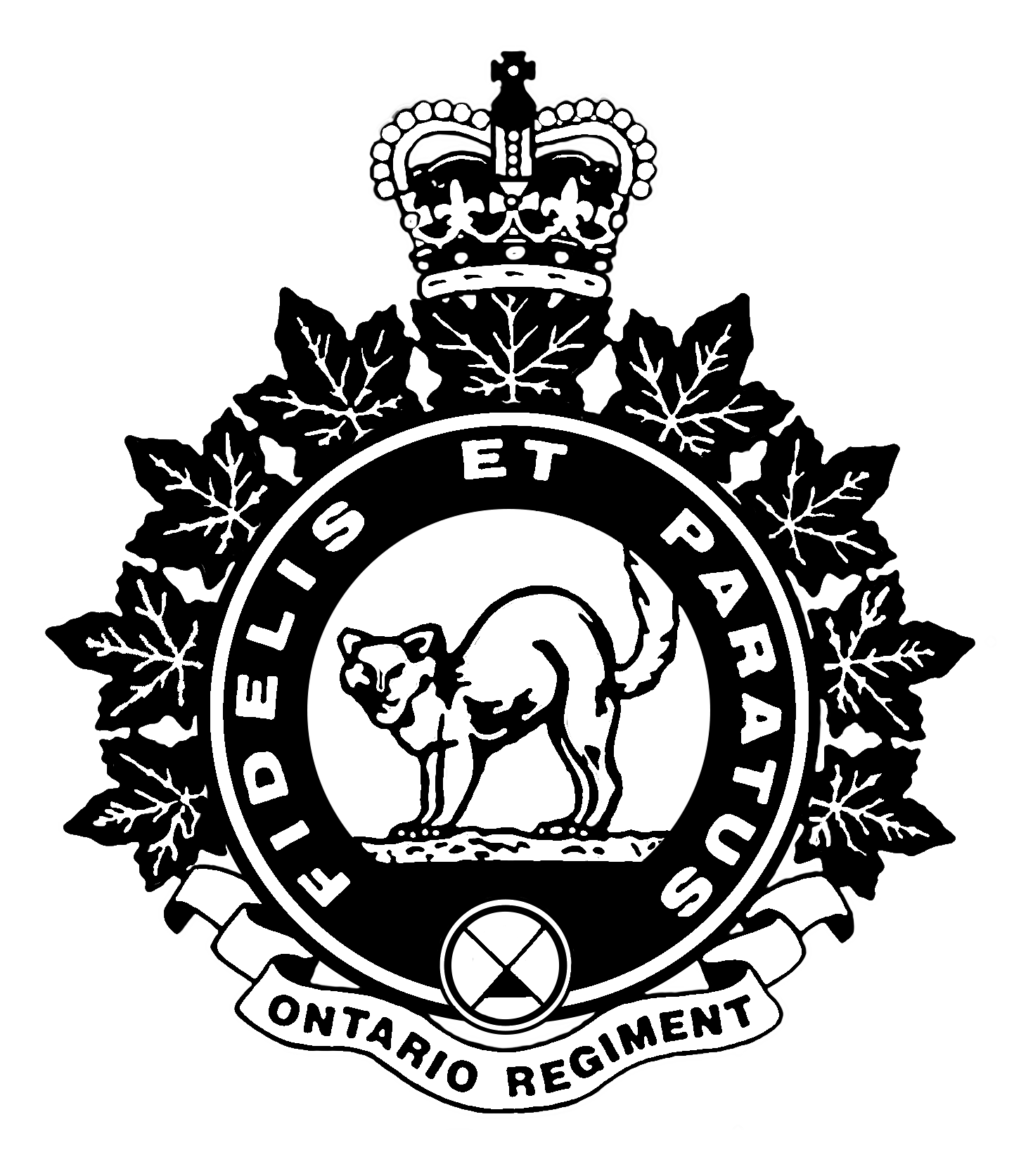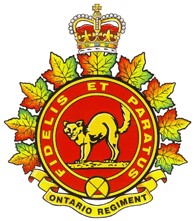
Photo by Lieutenant Daniel Guravich. Library and Archives Canada, PA-151745
The photo of the Ontario Regiment tank and its attached dugout in the mountains of Italy is one of the most commonly seen photos of the Regiment in various books.
In mid-November 1944, the Regiment was ordered to provide eight tanks to be assigned to the gun lines to thicken up the artillery fire. The tanks arrived in their positions on November 16 with four tanks under command of 19 Field Regiment, Royal Artillery and four tanks under command of 67 Field Regiment, Royal Artillery. The gun positions were to the south-west of the town of San Clemente, about 20 kilometres south of Bologna. The area is roughly here.
. Four more tanks briefly joined them in the same general area for a few days beginning on December 30.

Photo by Lieutenant Daniel Guravich. Library and Archives Canada, PA-173544

Photo by Lieutenant Daniel Guravich. Library and Archives Canada, PA-173543
The crews soon settled themselves into their location. They built dug-outs under and behind the tanks. The sides were built up with dirt and reinforced with sandbags. Corrugated tin was added for a roof and tarps draped over the whole dugout. The Regimental war diary noted that the “crews of these tanks are quite comfortable” and went on to describe the construction of the dugouts. Meals were cooked outdoors.

Photo by Lieutenant Daniel Guravich. Library and Archives Canada, PA-173618

Photo by Lieutenant Daniel Guravich. Library and Archives Canada, PA-173615
A lot of detail can be seen in the main photo. The tank in the foreground is named “Buckshee” and is quite weather-beaten. A second tank is visible just behind it but the name is not readable. There is a small table used to prepare meals near the dugout entrance. A ration box is on the ground behind the table and a Thompson sub-machine gun is popped up at the entrance. Spent 75mm shell casings litter the ground around the tank. In the background of the photo there are several damaged and burned out buildings. It’s not clear if anyone is living in them. In front of the buildings there are a number of vehicles including trucks, jeeps and trailers.

Photo by Lieutenant Daniel Guravich. Library and Archives Canada, PA-173619

Photo by Lieutenant Daniel Guravich. Library and Archives Canada, PA-173616
The Ontario Regiment tanks fired almost every day, normally about 250 rounds of high explosive each day. It was largely harassing fire on German positions or targets of opportunity. The firing was indirect and was directed by a forward observation officer from the artillery.
Orders were received on January 22, 1945 to leave the gun lines. Poor road conditions in the mountains necessitated the use of grousers on the tank tracks. Grousers are attached to the outer edges of track, thus making them wider and spreading the weight over a larger area which increases the mobility of the tank over soft ground. The last of the tanks arrived back at “B” Squadron HQ on January 25.

Photo by Lieutenant Daniel Guravich. Library and Archives Canada, PA-173620
Rod Henderson
Rod Henderson is the Regimental Historian of the Ontario Regiment. He served as a Sergeant in the Regiment and is the author of “Fidelis Et Paratus: The History of The Ontario Regiment RCAC”.


